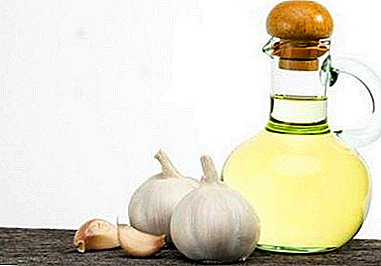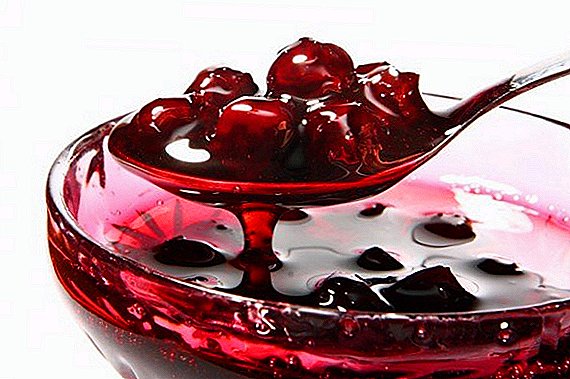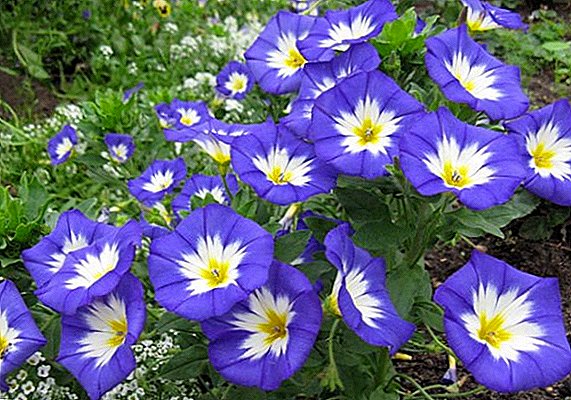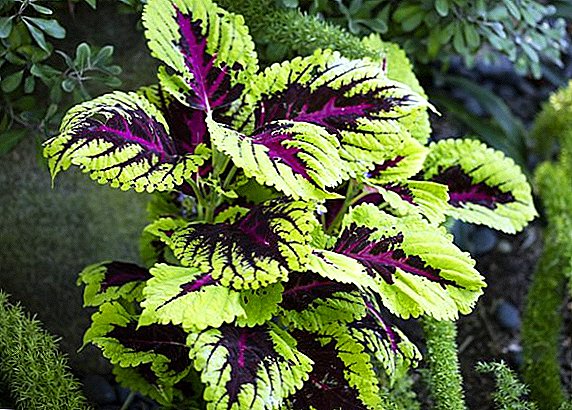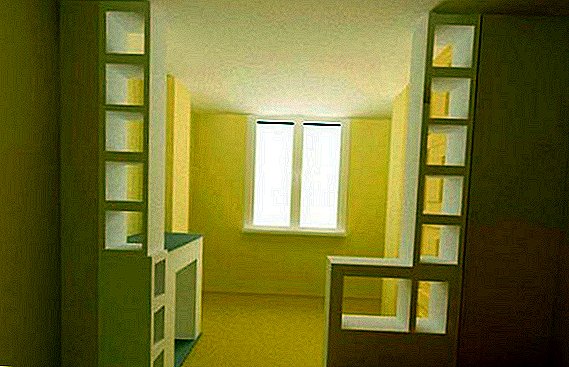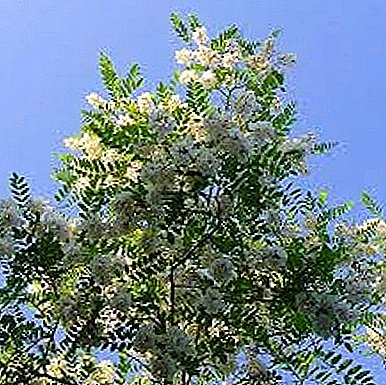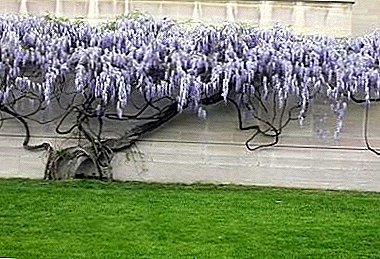
Blue moon wisteria is the most beautiful plant among perennial vines. Clusters of bright inflorescences in the daytime resemble a cool, fragrant waterfall, and at night they flicker with a cold silver color. It is not by chance that the name of this beauty is Blue moon or Blue Moon. The plant is actively used by growers for decorative purposes. It will decorate any balcony, gazebo, terrace, wall of the house, fence.
Wisteria - Wisteria macrostachya Blue moon (Macrostachia blue moon moon vitseria) is a decorative deciduous liana belonging to the legume family. In Russia, imported from the United States.
Plant characteristic
Plant height can reach 6-7 meters, sometimes more.
The flowers of the unusual form of lavender-blue, light blue, pinkish with purple tint color (depending on the variety and care) with a pale yellow neck are collected in clusters, like grape, from 15 to 30 cm long.
The foliage is glossy, dark green, complex: from 7-9 pairs of leaves. Sheets are alternate, complex-pened. Fruits are brown, collected in pods, resembling beans. It has a powerful root system.
This is the most cold-resistant grade of wisteria, withstands winter frosts up to -30-40 degrees.
Care
Landing

For planting it is better to choose 1-2 summer seedlings with a closed root system. Then the adaptation will be less painful.
The plant is unpretentious in relation to the soil. Well-drained, slightly alkaline soils with added humus are suitable for cultivation.
Does not tolerate only highly acidic peat soils.
For planting need to dig deep well (not less than 25 cm), fill it with humus. You can add a mixture of rotted foliage, river sand and clay-sod land. When planting use the method of transshipment, without deepening of the root collar.
Landing place
Must be good illuminated, wisteria is required to be in the sun for at least 6 hours a day. But it is also necessary to provide protection options in the cold season. For example, one of the sides should be covered by a wall. Optimally plant a plant on the south side of the house.
Strong supports should also be prepared so that the plant can continue to trail in the right direction. Shoots will easily trim around any support.
Fertilizer and dressing
To wisteria flowers were bright colors, and the leaves are not faded and have a decorative appearance, the plant will need additional feeding. These may be mineral fertilizers: for 1 m² of land you need 10 liters of water and 20 g of fertilizer. Compost: tinned manure tincture at the rate of 1:20. Chalk solution: 100 g per 1 bucket of water.
Transfer
Replanting adult wisteria is undesirable. If necessary - very carefully and with a strong pruning Vervay.
Watering
Shrub does not tolerate waterlogging. Abundant watering the plant is required only during planting and growing season. If at this moment moisture is not enough, then flowering will be weak, in the worst case, flower buds will not form at all. In December, watering is stopped.
Methods and breeding time

Produced by two types: cuttings and seeds.
Springtime is the best time for rooting. A one-year shoot is selected, an oblique incision is made in the middle of the shoot. The stalk is planted in fertilized soil to the point of incision. At the end of summer transplants with roots transplanted to the right place.
When using seeds in December, wisteria beans are sown in a greenhouse in drained, fertilized soil. Sowing covered with glass or plastic wrap. Storage should be dark. Approximately in a month shoots appear, they need to be taken out to the light room. When the sprouts are the size of a bush, they can be transplanted into a street greenhouse.
Bloom
Wisteria begins to bloom in late May - early June. Usually this is the most powerful flowering period. In July, the second stage of flowering begins, less abundant. In warm regions, flowering is repeated in mid-autumn.
Pruning
After flowering in summer and fall of foliage in autumn, the plant can be cut, then in the future it will bloom more intensively. Wisteria shoots are recommended to tie up as necessary so that the tips do not dry out and grow further.
For the formation of volume and growth it is possible to trim side shoots in mid-summer by 20-40.
Reference: The life span of wisteria is quite long. In areas with a warm climate and mild winters, the plant can live for more than 100 years.
During the season the vine adds in height by 2 - 2.5 meters.
Diseases and pests
The plant is resistant to diseases. Rarely attacked by pests as poisonous. However, leaves can be damaged by caterpillars or clover mites. In the first case, numerous holes appear on the leaves, in the second case, the leaves acquire an uncharacteristic bronze color. From the caterpillars the leaves are sprayed with a biological preparation, the mites are destroyed by acaricides. Green aphid can also be a threat to leaves and flowers, which effectively help insecticides.
Wisteria Blue moon does not require much care and significant costs. The adaptability of the plant allows you to plant it in large areas, and on balconies and loggias. This beauty is able to please with its fancy colors in any place chosen by us, causing admiration and pleasing the eye. It is as if created to give us aesthetic pleasure.
A photo
Next you will see a photo of the care and landing of Wisteria Macrostachia Blue Moon:




Useful materials
Below is a list of articles that may be useful to you:
- Types of Wisteria
- Wisteria care in the garden
- Propagation of Wisteria
- Blooming Wisteria
- Planting Wisteria


